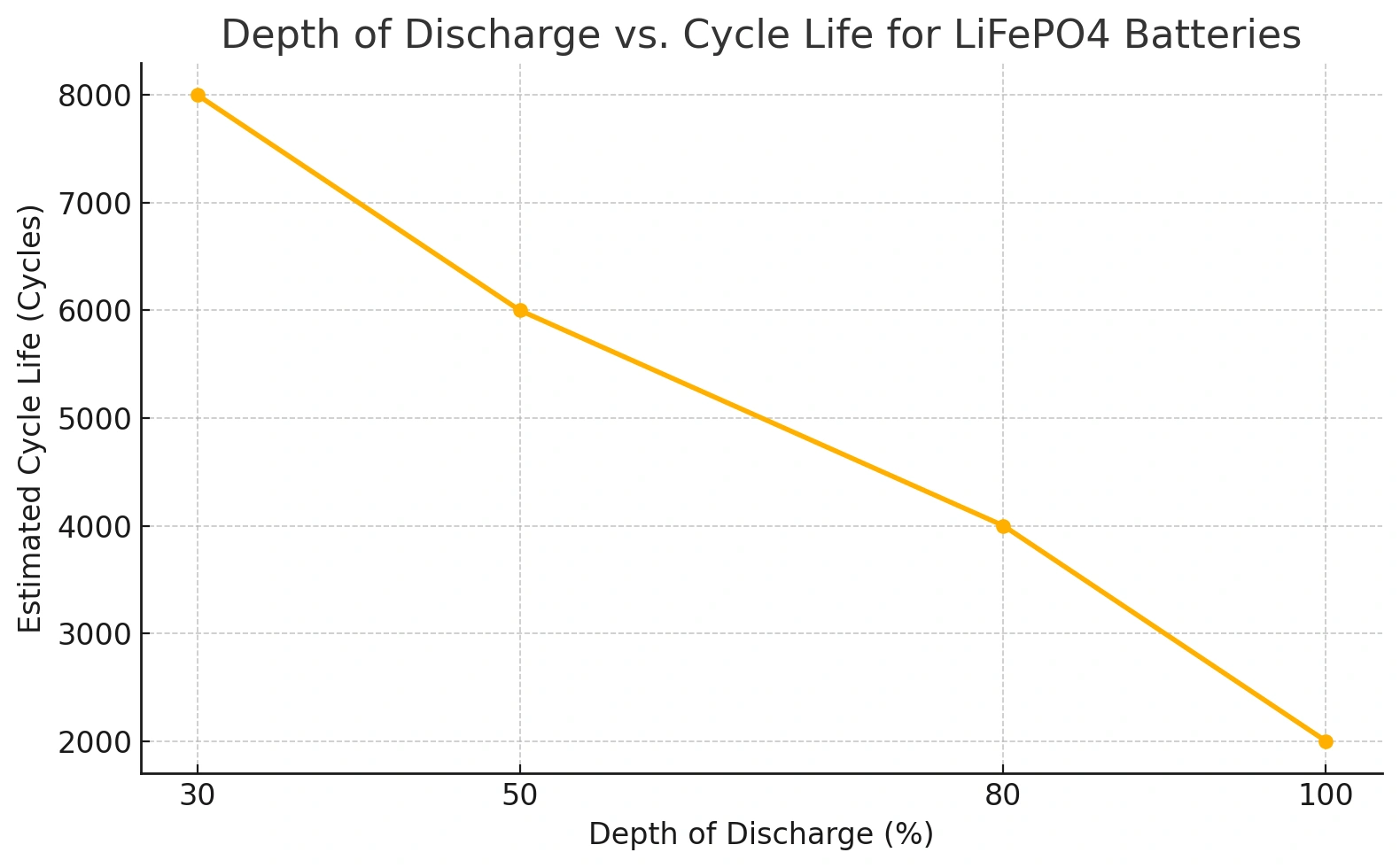Введение
Литий-железо-фосфатные (LiFePO₄) батареи широко используются в системы хранения энергииВ качестве аккумуляторов используются в электромобилях и промышленном оборудовании благодаря длительному сроку службы, термостабильности и безопасности. Однако способ разрядки этих батарей - высокоскоростной или обычный (стандартный) - может существенно повлиять на общий срок их службы. Понимание этой взаимосвязи крайне важно для разработчиков проектов, инженеров и системных интеграторов, стремящихся найти баланс между производительностью и долговечностью батарей.
Ключевые факторы, влияющие на срок службы LiFePO₄ аккумуляторов
На срок службы и скорость старения LiFePO₄ аккумуляторов влияют несколько переменных:
Рабочая температура: Высокие температуры ускоряют химическое разрушение; низкие температуры снижают разрядную способность.
Скорость разряда (C-rate): Высокие коэффициенты C увеличивают внутреннее тепло и механическое напряжение.
Глубина разгрузки (DoD): Более высокая DoD = меньшее количество общих циклов.
Диапазон напряжения: Работа вблизи верхнего/нижнего напряжения отсечки ускоряет старение.
Способ зарядки и состояние хранения: Неправильная зарядка или хранение полностью заряженных аккумуляторов в течение длительного времени приводит к окислению лития и потере емкости.
Управление этими переменными повышает срок службы батареи и надежность системы.
В чем разница между высокоскоростным и стандартным разрядом в LiFePO₄ батареях?
Стандартный разряд обычно подразумевает потребление тока в диапазоне от 0,2C до 0,5C, то есть батарея разряжается в течение 2-5 часов. Например, батарея емкостью 100 Ач, разряженная при 0,5C, будет непрерывно выдавать 50 А в течение 2 часов.
В отличие от этого, высокоскоростной разряд подразумевает скорость C выше 1С - до 3С или даже 5С в некоторых приложениях, таких как электроприводы или системы с импульсным режимом работы. Хотя LiFePO₄-батареи могут поддерживать высокоскоростной разряд в коротких сериях, регулярное использование при таких скоростях может привести к этому:
-
Увеличение внутреннего сопротивления с течением времени
-
Выделяют избыточное тепло, что приводит к разрушению электролита
-
Ускоряет снижение емкости и сокращает срок службы
Высокоскоростной разряд лучше всего использовать в редких случаях или в системах, где быстрая подача энергии приоритетнее долговечности.
Как глубина разряда (DoD) влияет на срок службы LiFePO₄ аккумуляторов?
Глубина разряда означает, сколько процентов емкости аккумулятора будет использовано до его подзарядки. A 100% DoD означает, что батарея полностью разряжена, в то время как 80% DoD указывает на то, что до начала зарядки используется только 80% емкости.
| Глубина разгрузки | Расчетный срок службы |
| 100% DoD | ~2,000-3,000 циклов |
| 80% DoD | ~3,000-5,000 циклов |
| 50% DoD | ~5,000-7,000 циклов |
Ограничение глубины разряда - проверенный способ максимизировать долгосрочную производительность LiFePO₄-батарей, особенно в солнечных и автономные системы.
Какова оптимальная скорость разряда для долговечности LiFePO₄ аккумулятора?
Для продления срока службы обычно рекомендуется поддерживать скорость разряда в пределах 0,2C и 0,5C. Эта линейка обеспечивает баланс между доставкой энергии и здоровьем клеток.
-
Системы хранения солнечной энергии / резервные системы: 0,2C оптимально для сглаживания энергии и медленной подачи энергии.
-
Электрические велосипеды / скутеры / легкие электромобили: В зависимости от теплового режима и частоты использования допустимо от 0,5C до 1C.
-
Промышленное применение: При правильном проектировании допустимы кратковременные всплески температуры выше 1С, но следует избегать постоянного использования высоких скоростей.
Чем выше C-rate, тем больше тепловая и электрохимическая нагрузка на батарею, что сокращает срок ее эффективной службы.
Каково минимальное безопасное напряжение для разрядки LiFePO₄ аккумулятора?
Поддержание надлежащих пределов напряжения во время разряда является ключевым фактором для сохранения срока службы LiFePO₄ аккумулятора. Общие рекомендуемые напряжения отключения включают:
| Напряжение системы | Безопасное напряжение отключения (на ячейку) | Общее напряжение |
| 12V (4S) | 2.5V-2.8V | ~10V-11.2V |
| 24V (8S) | 2.5V-2.8V | ~20V-22.4V |
| 48V (16S) | 2.5V-2.8V | ~40V-44.8V |
Разрядка ниже этих пределов может привести к переразряду, который необратимо повреждает батарею и аннулирует большинство гарантий. Правильно настроенный BMS (система управления аккумулятором) должны предотвратить это.
Профессиональные советы по продлению срока службы LiFePO₄ аккумулятора
- Используйте стандартную скорость разряда (0,2C-0,5C) для регулярной эксплуатации
- По возможности ограничьте DoD до 80% или ниже
- Избегайте непрерывного высокоскоростного разряда; используйте только короткие импульсы
- Зарядка и разрядка в диапазоне 15°C-35°C
- Хранить при температуре ~50% SOC, если не использовать в течение длительного времени
- Регулярно проверяйте клеммы для предотвращения сопротивления контактов
- Убедитесь, что BMS правильно настроена на напряжение, ток и тепловые ограничения
Заключение
Скорость разряда напрямую влияет на срок службы LiFePO₄-аккумуляторов. Хотя эти батареи способны выдерживать высокоскоростной разряд при необходимости, постоянная работа при высоких токах ускоряет старение и сокращает количество циклов. Стандартные методы разряда в сочетании с умеренной нагрузкой и правильным управлением напряжением могут значительно продлить срок службы батареи.
Понимая эти особенности разряда и правильно применяя их в своей системе, вы сможете оптимизировать производительность и долговечность. LiFePO₄ батареи обеспечивают надежное и стабильное хранение энергии, если они используются в оптимальных условиях эксплуатации.





